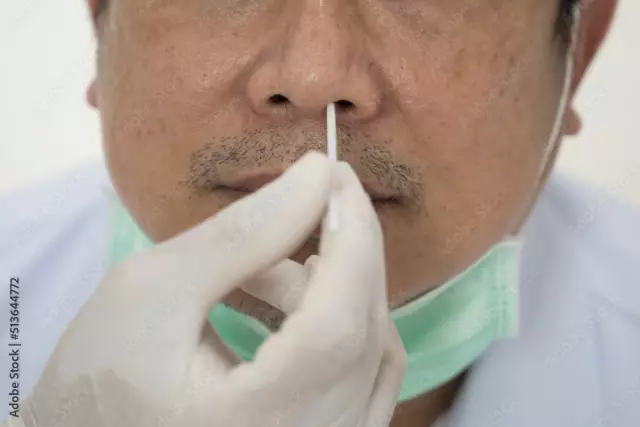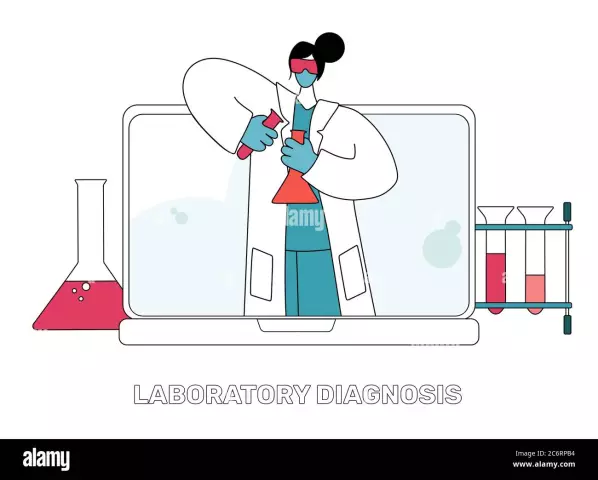- Author Curtis Blomfield [email protected].
- Public 2023-12-16 20:44.
- Last modified 2025-01-23 17:01.
Why do you need a swab? A swab from the throat allows you to determine the state of the patient's bacterial flora. Also, with its help, the level of sensitivity to antibacterial drugs is established. A swab is done to diagnose a sore throat in children and adults. The obtained samples are examined in laboratory conditions. This allows you to accurately assess the nature of the disease and select the optimal treatment.

How is a throat swab done?
The swab used in this procedure must be sterile. With its help, mucus samples are taken from the surface of the pharynx. To do this, with a special tool (spatula), the doctor must lightly press the root of the patient's tongue in order to reach the back of the pharynx. In this case, it is advisable not to touch the surface of the teeth and the oral mucosa with a swab. Then the swab is placed in a sterile flask, which is hermetically sealed and sent to the laboratory.
What is required of the patient?
Before performing a throat swab, the patient should be instructed about the need for preliminary preparation. Within 2 hours before sampling, the patient should noteating or gargling. If the swab is taken from the nose, then the nasal cavities must first be cleaned.

Nose swab
The material is taken as follows. A sterile swab is inserted alternately into each nostril. In this case, it is necessary to ensure its tight contact with the walls and septum of the nose. The collected material is immediately sown on prepared nutrient media. Part of the material must be placed on a glass slide, traced with a glassgraph and sent for microscopic examination.
Rhinocytological study
For this procedure, the tampon used is moistened with saline, then inserted 2-3 cm into the nasal passage. In this case, the swab should be pressed against the lower part of the mucous membrane of the nasal concha. Samples of the material are taken out on a glass slide degreased with ether. In the future, the material obtained in laboratory conditions will be subjected to special coloring. This will make it possible to establish the cellular composition of the substance.
Immunofluorescence assay

For faster diagnosis, samples of bacterial flora can be sent for immunofluorescence analysis. Then the test samples are treated with sera with antibodies labeled with fluorochromes. When combined with homologous antigens, a characteristic glow appears in the patient's samples. It is clearly visible in a fluorescent microscope and allowspromptly diagnose the disease.
Analysis results
Laboratory results are usually available within 3-5 days. A swab from the throat or nose helps to pinpoint the cause of the disease. This is extremely important for patients! Therefore, if an infectious disease is suspected, doctors often prescribe these tests. Treatment is carried out taking into account the identified features of the patient's bacterial flora.






